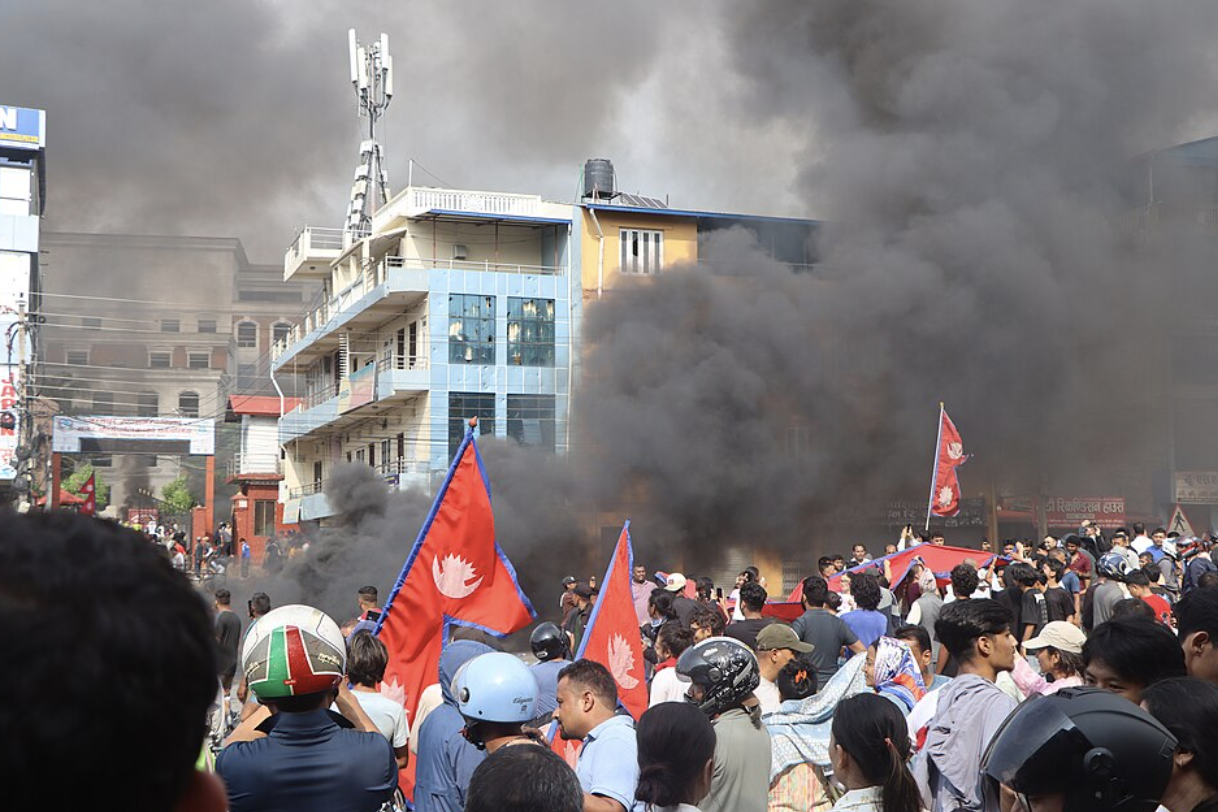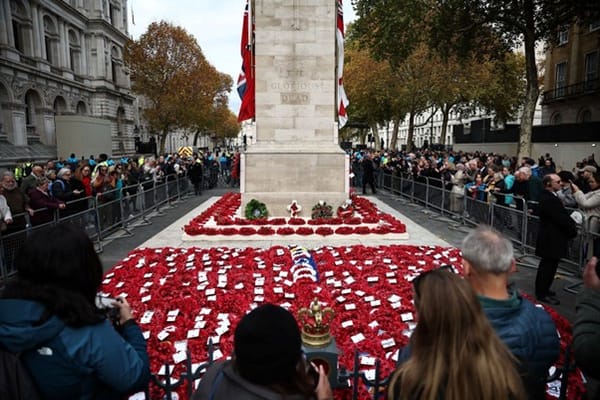Gen-Z Protests Rock Nepal

Siddhant Pawar, BSc Politics, Philosophy and Economics
Gen Z, notoriously known as the generation obsessed with screens, finally decided to showcase dissent in a six-day protest (from September 8th to September 13th) in Nepal, which forced the government’s dissolution.
On September 4th 2025, the Government of Nepal announced the shutdown of 26 social media platforms, including Facebook, X, YouTube, and LinkedIn. The general public, especially Gen Z, viewed this move as a threat to their freedom of speech and as an attempt to suppress platforms used for voicing criticism against the government. This exact moment sparked what became known as the biggest demonstration of dissent in the country, giving impetus to a domino effect that forced Prime Minister KP Sharma Oli to resign.
Fury against the government isn’t restricted to Gen Z. On March 4th 2025, tens of thousands gathered at a pro-monarchy protest advocating for the return of the deposed king to the throne. Hundreds of protestors were arrested, and security forces used tear gas to disperse the crowd. King Gyanendra is still highly revered by his countrymen and remains one of the only monarchs in the world not to leave his country once dethroned. Nepali royalists, therefore, continue to envisage the restoration of the old ‘Kingdom of Nepal.’
A common notion among the public is that while the power of the government remains heavily centralised, corruption is widespread and decentralised, even at the council or ward levels. According to the World Bank, Nepal also occupies one of the lowest positions in terms of GDP per capita, alongside 20% youth unemployment, and hundreds of thousands of exit permits being issued: a serious case of brain drain.
Whilst the youth is stifled through economic hardship, Saugat Thapa, son of Nepali politician Bindu Kumar Thapa, went viral on social media for organising a Christmas, packed with boxes of luxury labels such as Louis Vuitton, Cartier, and Gucci. This started the ‘#NepoBabies’ trend online, exposing the extravagant lives of those in power. Thapa was also named in the campaign.
On September 8th 2025, a huge crowd of protestors gathered outside the federal parliament for a peaceful rally organised by the NGO Hami Nepal. The rally was meant to be a peaceful demonstration against the social media ban and a wider dissent against corruption, however, by the end of the day, at least 19 people had been killed and more than 347 injured, as reported by The Kathmandu Post.
What began as a peaceful protest was hijacked by external forces, ‘opportunists’, which the Gen Z faction distances itself from, reported the BBC. The social media ban was lifted that evening, but it came at a huge cost.
Over the next few days, the protests erupted at a more violent pace, with protestors desecrating government buildings: the Singha Darbar (administrative headquarters), the Supreme Court of Nepal, the president’s residence at Sital Niwas, the prime minister’s residence at Baluwatar, and the headquarters of the Communist Party UML, according to The Times of India. This led to the resignation of the Prime Minister and of several cabinet ministers. The biggest consequence of these demonstrations was the anarchy-like state that followed.
On September 12th, Gen Z representatives inaugurated Sushila Karki, a former Supreme Court chief justice, as interim prime minister, making her the first female prime minister in Nepal’s history.
Since the Gen Z faction lacked a natural leader from within, it used the most egalitarian means of democratic elections through the social media app, Discord. Hami Nepal elected Karki to lead the interim government until the next general elections in March 2026.
Reuters reported that the final death toll reached 51, with more than 1,300 people injured.
After eleven years of civil war from 1996 to 2006, Nepal finally struck the ‘federal democracy’ chord. Over the following 17 years, the country saw 13 Prime Ministers, usually from the same three different parties. But 2025 saw the birth of a new democracy in Nepal.
Sustaining this democracy will not be an easy task for the politically inexperienced Karki, who will face questions from the Gen Z protestors regarding the state of the economy, the investigation into the perpetrators of violence, and about possible foreign influence to subvert the Communist regime.
However, this also allows Nepal to scrap its pseudo ‘constitutional-democratic’ masquerade and start from scratch. Nepal’s constitution has 308 articles, and none of them were debated when it was drafted, explicitly showing how the foundations of democracy in the country are based on superficial laws, perhaps no longer suitable for its citizens.
How Nepal meanders through this labyrinth will be at the centre stage of global geopolitics until the general elections, with a diverse array of names being projected to take up the premiership, from the monarch to Balen Shah, a former rapper currently serving as the mayor of Kathmandu.
England’s relationship with Nepal is one of longstanding friendship and cooperation, rooted in over 200 years of diplomatic ties, formalised by the 1923 Treaty of Friendship. How these diplomatic relations evolve will be worth following, especially if the protests lead to any spillover effects, depending on how much traction the Gen Z movement gains.



